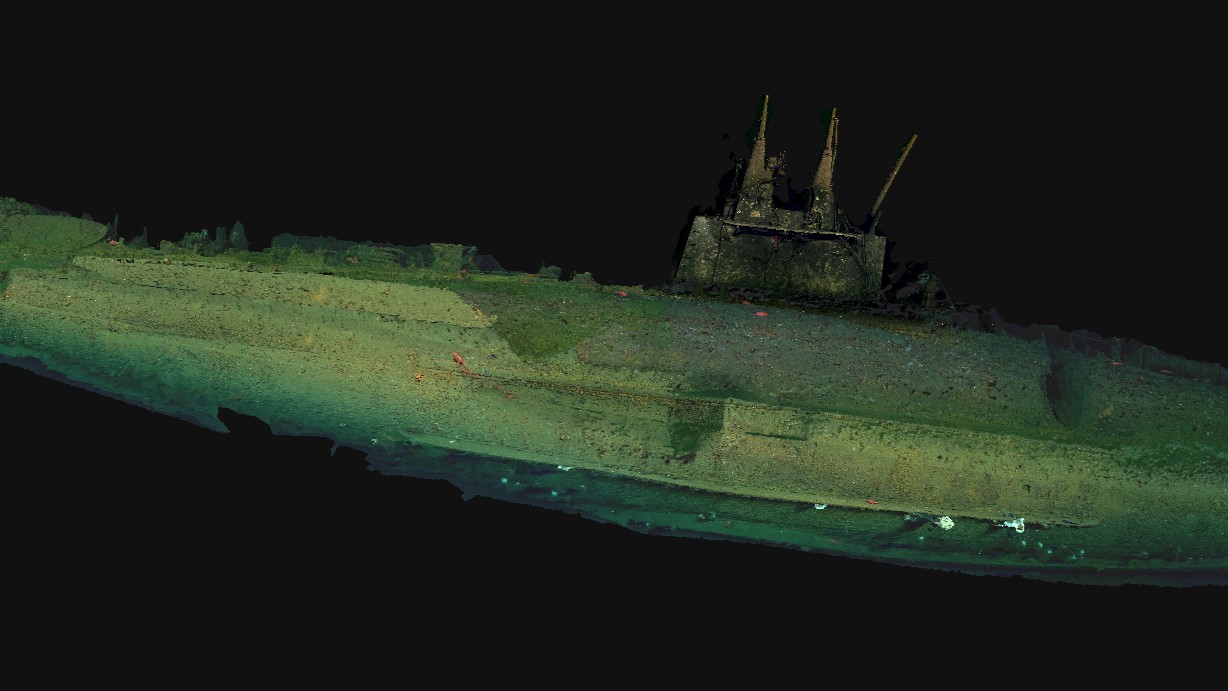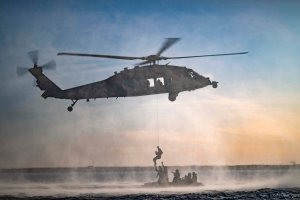
After more than 100 years, we have the first actual image of the wreck of a sunken U.S. Navy submarine from World War I. A recent expedition to survey it and other lost military hardware has captured video and photographs of the USS F-1.
This week the Woods Hole Oceanographic Institution and Naval History and Heritage Command shared the results from a deep-sea dive conducted in February and March of this year. The ship the Atlantis carried a team of researchers, including trainees, to the waters off of San Diego, where they examined the wreck of the USS F-1 submarine and a Grumman TBM Avenger. Until this year there were only limited sonar readings showing the location of the lost submarine.
The USS F-1 was originally discovered in 1975 while crews were searching for the wreck of an aircraft that crashed in the waters off of La Jolla. That discovery was conducted via sonar, with teams finding that the sub was “completely intact” and it even spotted two periscopes. No plans were made to raise or salvage the submarine then. This expedition earlier this year was the first time archaeologists visited the wreck and the first time the USS F-1 was heavily photographed and filmed, giving the most detailed look at it yet.
The team on the Atlantis conducted three dives, two at a sunken aircraft and one at the USS F-1. First they used an autonomous underwater vehicle to pinpoint the wrecks using multi-beam sonar, then a drone to examine it. Finally team members used a submersible to dive to the wreck where they took photos and video of the wreckage. The wreck is located roughly 400 meters below the surface.
The USS F-1, originally laid down in 1909 as the USS Carp, entered service in 1912, and served as part of First Submarine Group, Pacific Torpedo Flotilla. The submarine had a mixed service; at one point it held the world record for the deepest dive at 86 meters, but it also ran aground shortly after it was commissioned. This was at a time where submarine warfare was becoming strategically important but submarines themselves were still dealing with several challenges. Many submarines could only dive for short periods of time and means of communication and sight were particularly hampered. The vessels themselves were much more cramped than submarines today — the F-1 was only 143-feet long.

On Dec. 17, 1917, the USS F-1 was carrying out a maneuver exercise with other submarines near San Diego when it and another submarine, the USS F-3, collided. The F-3 suffered some damage, but the F-1’s engine room and port side were breached, flooding the submarine. According to survivors, the submarine sank in seconds, taking on water quickly. 19 sailors of the USS F-1’s 24-person crew died.
“Operating at sea has always been inherently dangerous, and even more so for early submarines. In this case, night, fog, speed, and radio miscommunications contributed to the loss of 19 men, who demonstrated great courage just by volunteering for submarine duty in those days,” Naval History and Heritage Command Director Sam J. Cox, U.S. Navy rear admiral (retired), said in a Navy release on the expedition’s findings.
The latest on Task & Purpose
- Army to eliminate 2 Security Force Assistance Brigades, reassign experienced soldiers
- Why the Army’s new XM7 rifle reignited a debate over volume of fire
- Air Force delay on separation and retirement orders isn’t ‘stop loss,’ defense official says
- F-35’s close call over Yemen raises questions about how it’s used
- An Army unit’s ‘extreme use of profanity’ was so bad, they made a rule about it

